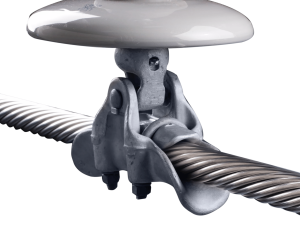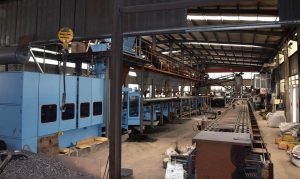Iron pipe casting hangers and support are essential components in any plumbing system. They are designed to provide stability and support to pipes, preventing them from sagging, bending, or breaking under the weight of water or other fluids. In this ultimate guide, we will explore everything you need to know about iron pipe hangers and support, including their types, functions, installation, and maintenance. Whether you are a plumber, a DIY enthusiast, or a homeowner, this guide will help you understand the importance of iron pipe hangers and support and how to use them effectively.
Types of Iron Pipe Hangers and Support
Iron pipe hangers and support come in various types, each designed for specific applications and pipe sizes. The most common types include:
1. Clevis Hangers: These hangers are designed to support horizontal pipes and allow for easy adjustment of the pipe’s height. They consist of a U-shaped bracket that attaches to the pipe and a threaded rod that connects to the ceiling or wall.
2. Split Ring Hangers: These hangers are used to support vertical pipes and provide a secure grip around the pipe. They consist of a split ring that wraps around the pipe and a threaded rod that connects to the ceiling or wall.
3. Swivel Ring Hangers: These hangers are similar to split ring hangers but allow for easy adjustment of the pipe’s angle. They consist of a swivel ring that wraps around the pipe and a threaded rod that connects to the ceiling or wall.
4. Beam Clamps: These clamps are used to attach pipes to beams or other structural elements. They consist of a clamp that wraps around the beam and a threaded rod that connects to the pipe.
5. Pipe Rollers: These rollers are used to support pipes that run along a horizontal surface, such as a roof or a floor. They consist of a roller that allows the pipe to move freely and a bracket that attaches to the surface.
Functions of Iron Pipe Hangers and Support
Iron pipe hangers and support serve several functions in a plumbing system, including:
1. Providing stability and support to pipes: Iron pipe hangers and support prevent pipes from sagging, bending, or breaking under the weight of water or other fluids.
2. Reducing vibration and noise: Iron pipe hangers and support absorb vibrations and reduce noise caused by water flow or other factors.
3. Allowing for easy adjustment of pipe height and angle: Clevis hangers and swivel ring hangers allow for easy adjustment of the pipe’s height and angle, making it easier to install and maintain the plumbing system.
4. Protecting pipes from damage: Iron pipe hangers and support prevent pipes from rubbing against other surfaces, which can cause damage and leaks.
Installation of Iron Pipe Hangers and Support
Proper installation of iron pipe hangers and support is crucial to ensure the stability and longevity of the plumbing system. Here are the steps to follow when installing iron pipe hangers and support:
1. Determine the type and size of the pipe: Before installing iron pipe hangers and support, you need to determine the type and size of the pipe you are working with. This will help you choose the right type of hanger or support and ensure a secure fit.
2. Choose the right hanger or support: Based on the type and size of the pipe, choose the right type of hanger or support that will provide adequate support and stability.
3. Determine the spacing between hangers: The spacing between hangers depends on the weight of the pipe and the fluid it carries. As a general rule, the spacing should be no more than 10 feet for horizontal pipes and no more than 12 feet for vertical pipes.
4. Mark the location of the hangers: Use a marker or a pencil to mark the location of the hangers on the ceiling or wall. Make sure the marks are level and evenly spaced.
5. Install the hangers: Use screws or bolts to attach the hangers to the ceiling or wall. Make sure the hangers are securely fastened and level.
Maintenance of Iron Pipe Hangers and Support
Regular maintenance of iron pipe hangers and support is essential to ensure their proper functioning and prevent leaks or damage to the plumbing system. Here are some tips for maintaining iron pipe hangers and support:
1. Inspect the hangers regularly: Check the hangers for signs of wear, corrosion, or damage. Replace any damaged or worn-out hangers immediately.
2. Tighten loose bolts or screws: Check the bolts or screws that attach the hangers to the ceiling or wall and tighten them if necessary.
3. Lubricate moving parts: Apply a lubricant to the moving parts of the hangers, such as the swivel ring or roller, to ensure smooth movement and prevent rust.
4. Clean the hangers: Use a damp cloth to clean the hangers and remove any dirt or debris that may have accumulated on them.
































-1.png)



